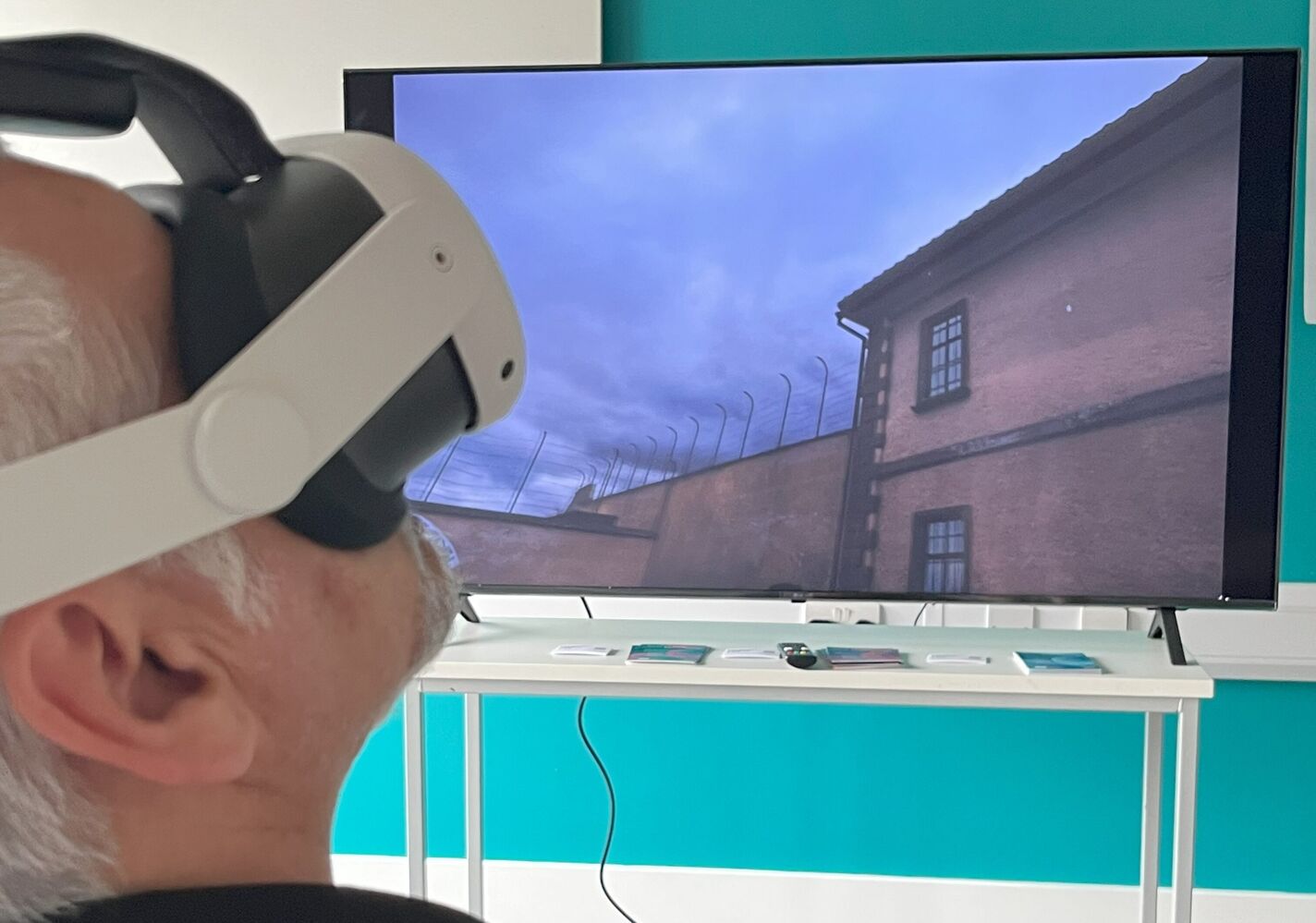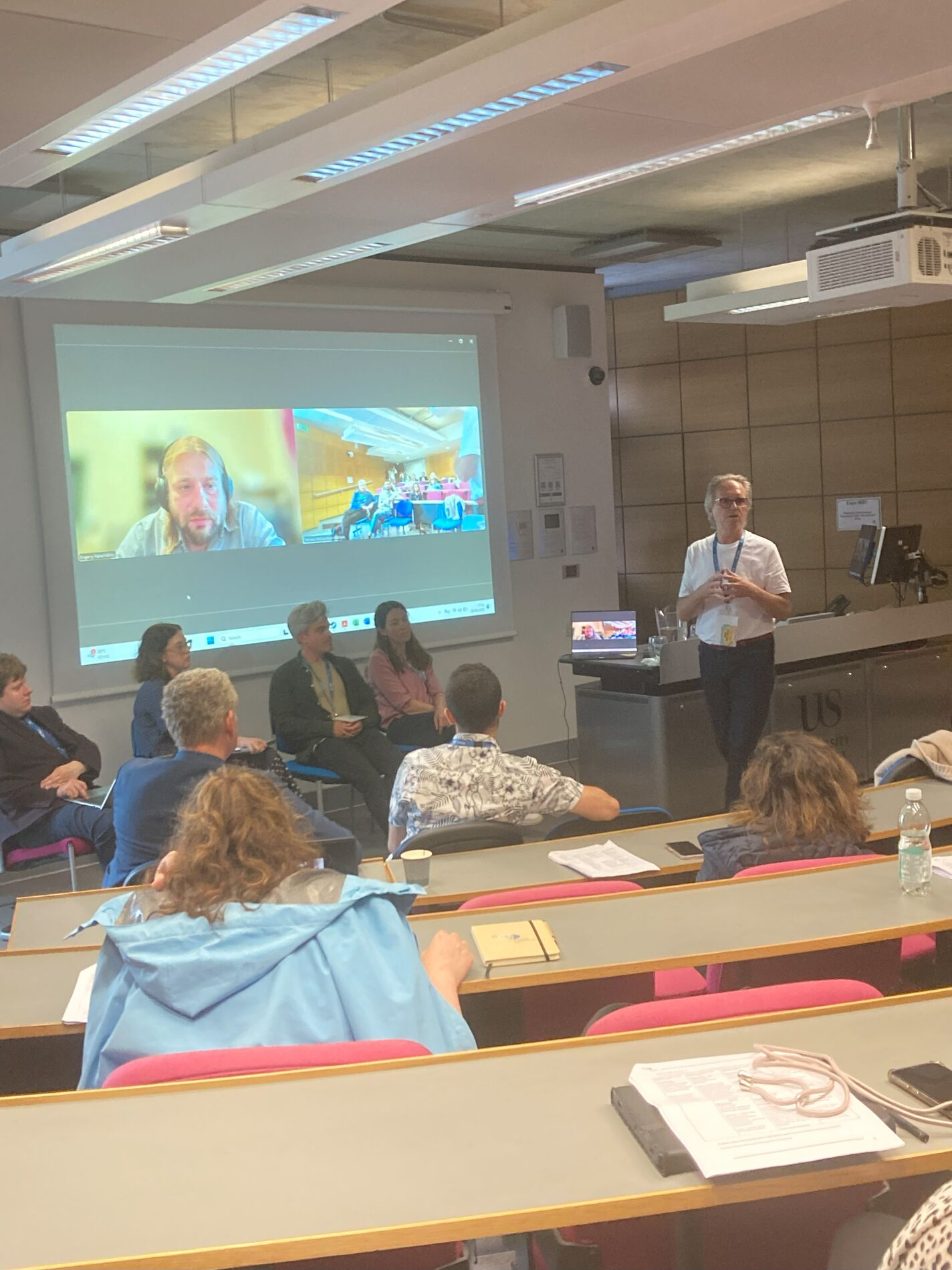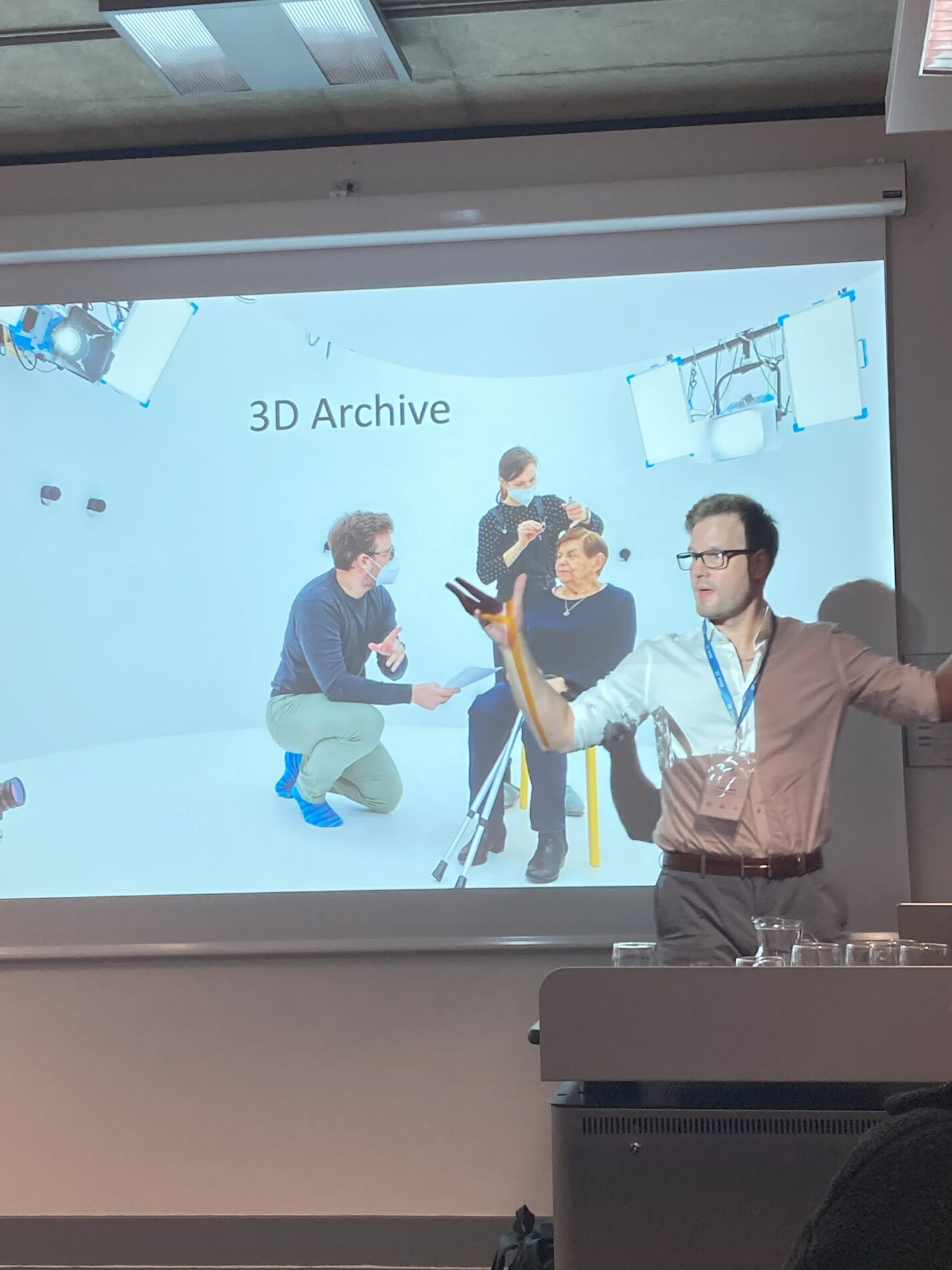Verlorene Zeit wiedergewonnen
Mit „Die wenige Zeit“ schuf Regisseur Christian Zipfel ein volumetrisches Videointerview mit Margot Friedländer, in dem die inzwischen verstorbene Holocaust-Überlebende über ihr Leben reflektiert. Das erste einer Reihe von zwanzig Interviews mit Holocaust-Überlebenden wurde im Potsdamer Volucap-Studio von 36 Kameras gleichzeitig gefilmt, um ein vollständiges dreidimensionales Bild für die anschließende Verarbeitung in das volumetrische Format zu erhalten.
KI und Konservierung
„Pedanterie – Die Wäscherei von Auschwitz“ nutzt generative KI, um eine mögliche visuelle Dokumentation der Geschichte der Wäscherei des Konzentrationslagers Auschwitz zu erstellen. Um die Lücke zu füllen, die durch fehlende Dokumentation entstanden ist, führten Evgeny Kalachikhin und Martin Gordon in Zusammenarbeit mit lokalen Historikern vor-Ort-Recherchen durch. Anschließend verwendete Kalachikhin generative KI, um Foto- und Videomaterial zu erstellen, das den Wäschereikomplex so darstellt, wie er zur Zeit seiner Nutzung zwischen 1939 und 1943 ausgesehen haben dürfte. Die Projektpräsentation löste eine lebhafte Diskussion zum Thema Authentizität und KI aus.
---
The CX Studio at the Landecker Connective Holocaust Commemoration Expo 2025
How can Holocaust remembrance evolve in the digital age? In June 2025, CX Studio was invited by the Landecker Collective Holocaust Commemorative Expo to present two projects that pursue forward-looking approaches in this regard: the generative AI project ‘The Auschwitz Laundry’ and the VR project ‘The Lost Time’.
Lost time recaptured
With ‘The Lost Time’, director Christian Zipfel created a volumetric video interview with Margot Friedländer, in which the now-deceased Holocaust survivor reflects on her life. The first in a series of twenty interviews with Holocaust survivors was filmed simultaneously by 36 cameras at the Volucap studio in Potsdam in order to obtain a complete three-dimensional image for subsequent processing into volumetric format.
AI and preservation
‘Pedanterie – The Laundry of Auschwitz’ uses generative AI to create a possible visual documentation of the history of the laundry at the Auschwitz concentration camp. To fill the gap left by the lack of documentation, Evgeny Kalachikhin and Martin Gordon conducted on-site research in collaboration with local historians. Kalachikhin then used generative AI to create photo and video material to depict the laundry complex as it would have appeared at the time of its use between 1939 and 1943. The project presentation provoked much interestandsparked a lively discussion on the topic of authenticity and AI.




